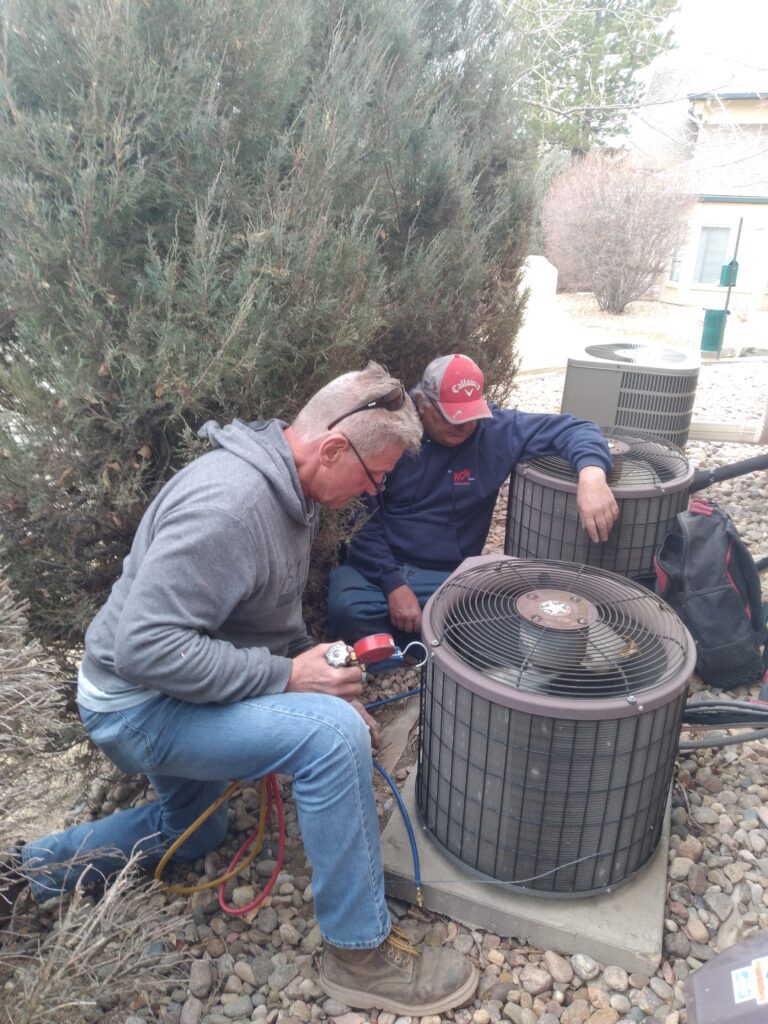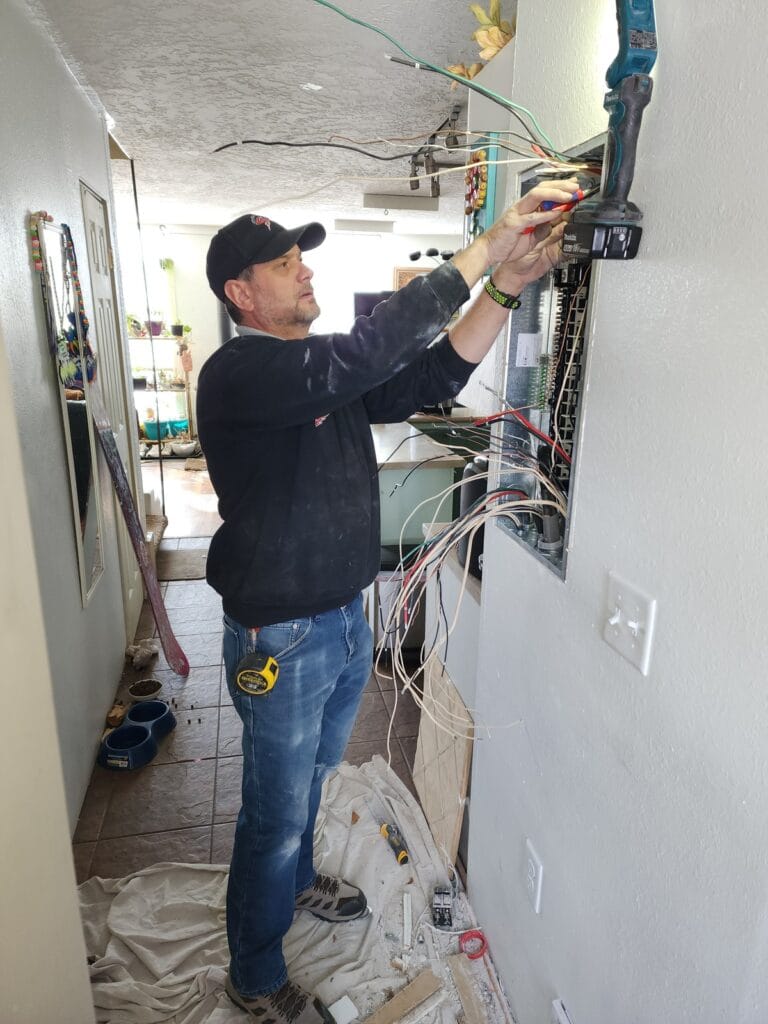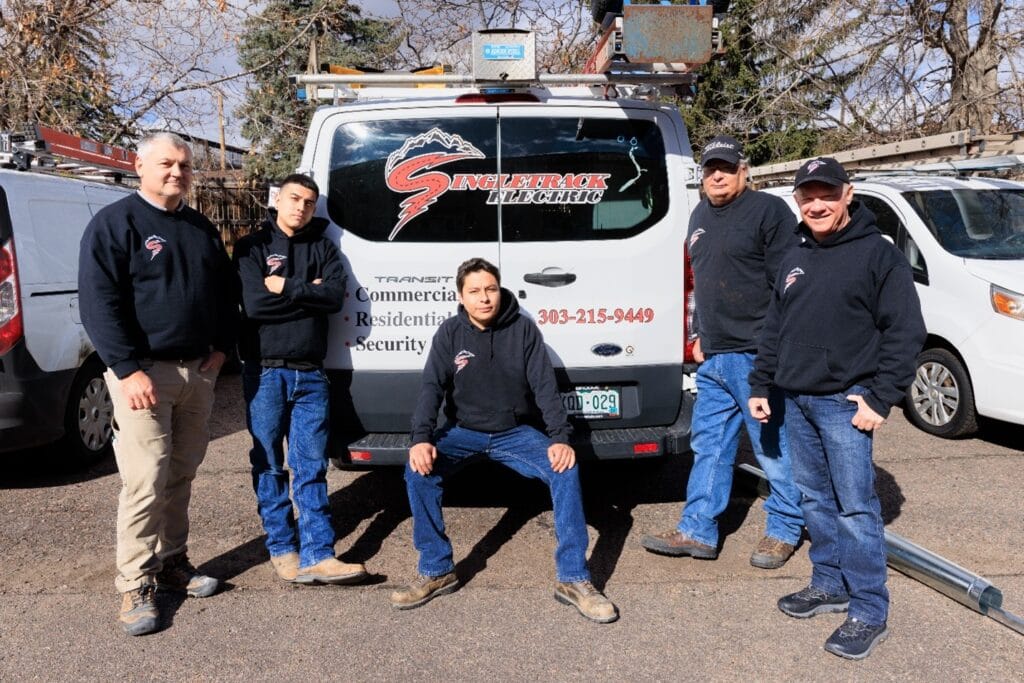Thermostat Troubles? Here’s How to Fix Your Thermostat Issues
Since 2002, Singletrack Electric & Heating has been a trusted provider of top-quality services in Golden, CO, and the greater Denver area. A malfunctioning thermostat can disrupt your home’s comfort and lead to inefficient heating or cooling.
Whether your thermostat is unresponsive, displaying incorrect temperatures, or not communicating with your HVAC system, understanding the potential causes and solutions is essential.
In this blog, we’ll guide you through the steps to troubleshoot and fix common thermostat issues, helping you restore comfort to your home quickly and efficiently.

The Thermostat Is Turned Off
If your thermostat has a blank screen and appears to be dead, check to see if it has been turned off. While unlikely, someone in your home may have accidentally bumped into the device, turning it off in the process. Note that some thermostats have a press button that turns off the device, while others have a switch.
In addition, you will also want to check the breaker box to ensure the breaker for that section of the house has not been tripped.
Common Causes and Solutions for Dead Thermostat Batteries
Dead batteries are one of the most common reasons thermostats stop working. Some thermostats are directly connected to the HVAC system using a C-wire or common wire to supply power. However, others require power from batteries that can drain over time.
If you have a thermostat that runs on batteries, replace them with fresh batteries to see if it turns back on. Most thermostats require AA or AAA batteries to operate.
Low Voltage

Thermostats that don’t run on batteries generally use power supplied by a transformer’s 24 volts located within your HVAC equipment. While experienced HVAC technicians will ensure that the unit produces adequate voltage to power the thermostat, a do-it-yourself or inexperienced technician may overlook this important step.
When an HVAC system does not produce enough voltage, the thermostat’s screen can go blank due to a lack of power. In this case, bringing in a reputable HVAC technician can remedy the problem. Singletrack Electric & Heating offers performance and satisfaction guarantees to ensure that any equipment installed is sized accurately for the home and is properly maintained and operated in accordance with the manufacturer’s operating manuals.
Incorrect Settings
If you look at your thermostat, you’ll find a variety of settings. Accidentally changing these settings could make your thermostat appear blank, even though it’s still in good working order.
For example, you may have set the brightness level on your thermostat too low, making the screen appear blank. Some thermostats also have settings that automatically adjust the screen’s brightness level based on the amount of light in the room to reserve battery power. Modify the settings to determine if they’re to blame for the blank screen.
Dirty Air Filter

While it may seem unlikely, a dirty or clogged air filter can contribute to a thermostat that appears dead. When you forget to clean or replace your air filter regularly, it can accumulate dirt, dust, and other debris that forces the equipment to work harder. This excess stress can overheat or overload your unit, causing it to shut down as a safety precaution.
Check to see if there are any blocked or closed air vents. Also, any obstructions that could be preventing adequate airflow should be removed. As clogs can occur in other parts of the HVAC equipment, it’s essential to have your unit regularly cleaned and maintained. At Singletrack., our Peak membership plan protects your system against costly breakdowns. Give us a call at (303)215-9449 or visit here to learn more – https://www.singletrackelectric.com/maintenance-plan/
Tripped Circuit Breaker
When troubleshooting why your thermostat appears dead, determine if the root cause is a tripped circuit breaker. Every home is wired uniquely, and you may find that your thermostat shares a breaker. If the device or appliance on the same breaker pulls too much power, it could overload the system, causing the thermostat to power off automatically.
Look at your circuit breaker panel and find the breaker that powers the thermostat. The switch will have three settings: “on,” “off,”, and a neutral setting in the middle. If the breaker is tripped, the switch will be in the middle. To turn it back on, set the breaker to “off” and then back to “on.”
Tripped Safety Switch
Along with checking the circuit breaker to see if it’s been tripped, check the safety switch. HVAC systems contain built-in safety switches designed to automatically turn off the unit in a hazardous situation, such as high temperatures or excess moisture. You can locate the safety switch in the drain pan.
If you check the safety switch and notice the sensor has gone off, contact a local HVAC technician to inspect the system for potential problems. With over 20 years in the business, our background-checked technicians have the skills, knowledge, and ongoing safety training to address any heating or cooling-related problem.
Open Furnace Door
Sometimes, a thermostat may appear dead even though there’s nothing physically wrong with the thermostat or HVAC equipment. Instead, the furnace door may simply be ajar. While not every thermostat is sensitive to this issue, a loose or open furnace door may cause the thermostat to shut off as a safety precaution.
Before continuing to troubleshoot the thermostat, check to see that the furnace door is firmly secured.
Faulty or Dirty Wiring

If your thermostat is not working correctly or appears dead, bring in an HVAC technician to inspect the wiring. Dirt and dust can accumulate on wiring over time and may require cleaning to work properly again. Cleaning wires can be dangerous and should only be performed by a trained HVAC professional.
Wiring can also become loose or damaged. Loose wiring can occur due to age or property damage and will generally need to be tightened up. If you have pests in your walls, basement, or attic, these critters could also be chewing on the wires, causing them to short-circuit.
Incompatible Parts
If your thermostat turned off directly after repairs were made to your HVAC system, the reason it appears dead could be due to incompatible replacement parts. Replacing any components inside or outside of an air conditioning system, or installing a new furnace or heat pump, could lead to problems with the thermostat if any of the parts are not compatible with the unit.
As this problem can be difficult to diagnose on your own, it’s best to bring in an experienced HVAC technician to diagnose the issue and recommend a safe solution. Call us anytime at (303)215-9449; we’d be happy to help!
Old or Broken Thermostat
Despite your best efforts to maintain your thermostat since its initial installation, no device lasts forever. If your thermostat is old, it may be broken and cannot be repaired. The average thermostat has a life expectancy of about ten years. Consider a replacement if your thermostat has reached or surpassed its life expectancy.
The cause of an old or broken thermostat is often the thermostat control board. This board is responsible for communicating with other HVAC equipment in your home to ensure that your heating and cooling systems run smoothly. If your thermostat control board has too much wear or tear due to age or is otherwise malfunctioning, have it promptly replaced.
Schedule Fast Service Today

A malfunctioning thermostat can be a significant inconvenience, but with the right troubleshooting steps, you can often resolve the issue yourself. By following our guide, you can identify common problems and take appropriate actions to restore your home’s comfort. If the problem persists or you’re unsure about handling it on your own, don’t hesitate to reach out to the professionals at Singletrack Electric & Heating.
For expert assistance and reliable service in Golden, CO, and the greater Denver area, contact Singletrack Electric & Heating at (303) 215-9449. Our experienced team is here to help you with all your heating, cooling, and electrical needs.
